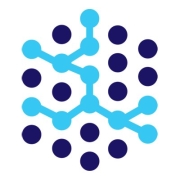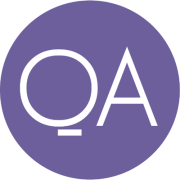Regression Testing Tools are designed to verify that software updates do not break or degrade current product functionality, ensuring consistent performance and reliability.
These tools automate the retesting of a software application's components or systems after modifications to guarantee previously developed and tested software continues to function after a change. Popular among QA teams, these tools help maintain software quality across frequent updates, with leading solutions supporting integration with CI/CD pipelines for seamless deployment processes.
What features define Regression Testing Tools?In industries such as finance and healthcare, these tools are crucial in ensuring compliance and reliability when frequent software updates are deployed. They help safeguard sensitive information and maintain transaction integrity by preventing disruptions caused by code changes.
Regression Testing Tools are significant for organizations engaged in ongoing software development. They support enhanced productivity, risk management, and help maintain the quality and performance of software operations amidst continuous change.



































There are four primary techniques that developers can use when they are running regression tests. Developers can choose the technique that is most appropriate for their particular situation.
Regression testing and user acceptance testing (UAT) are different testing protocol types that are conducted at totally different points of the application development process. UAT is a testing protocol that runs the initial testing, while an application is under development. This is the testing that takes place prior to an application reaching its intended end user. UAT takes place before users ever see the end product. Regression testing is conducted after the product has already been rolled out and used. User data can play an important role in the regression testing process.
In order for applications to adapt to the constantly changing technical world, they need to be upgraded. This can come with risks, as patches could introduce code to the application that interferes with what is already there. Upgrades might negatively impact the performance of the application’s features. Developers conduct regression tests to spot and resolve such issues before they impact the application’s users.
There are several basic types of regression testing methods. These methods include:
1. Corrective regression testing is used when no changes have been introduced in the product’s specification of the product. Existing test cases can be used to retest the product.
2. Selective regression testing analyzes the impact of the new code on the existing software. Selection regression testing is conducted before any new code is introduced to the product. This kind of testing uses a subset of the test case that already exists, reducing the cost of retesting.
3. Progressive regression testing is used when the application developers come up with new testing cases or when changes have been made to the application’s specifications. This ensures that the changes to the application don’t hinder the functioning of the features that are already a part of the application.
4. Partial regression testing is conducted any time users have added code to their already existing code. The purpose of these tests is to make sure that the application continues to function as it did previously despite the addition of new code.
There are a number of features that should be part of the designs of effective regressive testing tools. These features include:
Application developers can benefit in many different ways if they choose to employ regression testing tools. These benefits can include:
Regression Testing Tools offer several benefits, such as saving time by automatically executing test cases, ensuring consistency in test execution, and identifying software bugs that might arise from recent code changes. These tools allow you to focus on detecting performance issues and compatibility problems across different platforms, helping maintain the stability and reliability of your software.
How do Regression Testing Tools integrate with CI/CD pipelines?Most Regression Testing Tools are designed to seamlessly integrate with Continuous Integration/Continuous Deployment (CI/CD) pipelines. By incorporating these tools into your CI/CD workflow, you can automate the testing process, ensuring that new code commits are automatically tested for regressions. This integration helps catch defects early, reduces manual effort, and facilitates faster software delivery.
What are key features to look for in a Regression Testing Tool?When selecting a Regression Testing Tool, you should look for features like automation capabilities, ease of integration with existing systems, comprehensive reporting functionalities, support for a wide range of platforms and languages, and the ability to manage and execute large test suites efficiently. These features help you ensure a smooth and effective testing process, enhancing overall software quality.
How can AI enhance Regression Testing Tools?AI can significantly enhance Regression Testing Tools by improving test coverage and efficiency. AI algorithms can automatically generate test cases based on user behavior, prioritize test execution to focus on high-risk areas, and identify patterns that might indicate potential regression issues. This leads to smarter, faster testing cycles that adapt to your software’s changing needs.
What are common challenges faced when using Regression Testing Tools?Common challenges include managing large test suites, which can become time-consuming and difficult to maintain. False positives/negatives are also an issue, where tests erroneously flag code as defective or vice versa. Ensuring test scripts are kept up-to-date with rapid software changes can be challenging as well. Choosing a tool that addresses these issues with features like smart test case management and easy script-editing can mitigate these challenges.